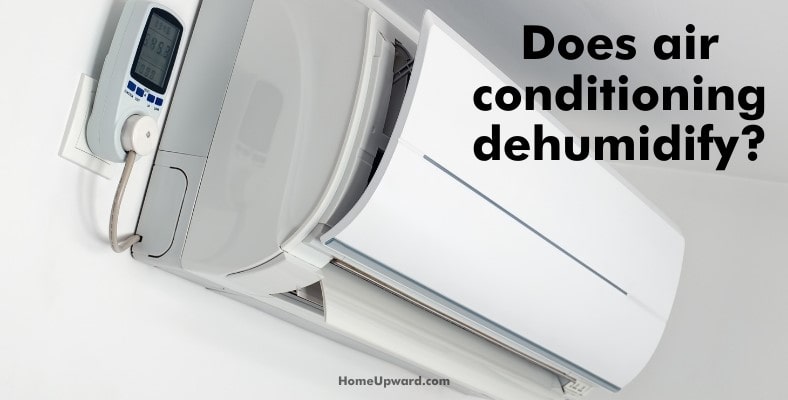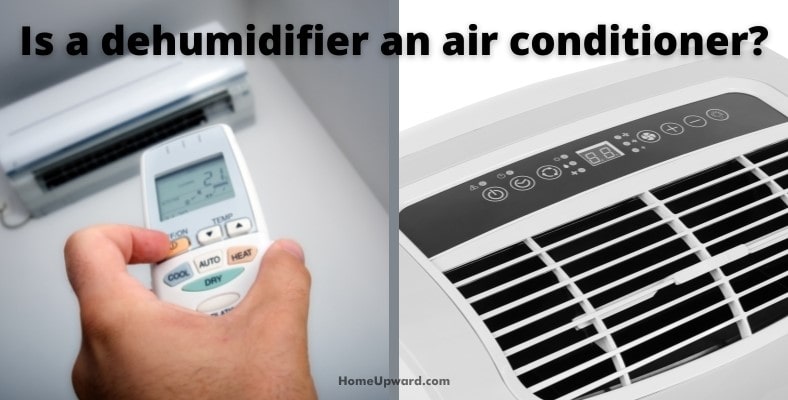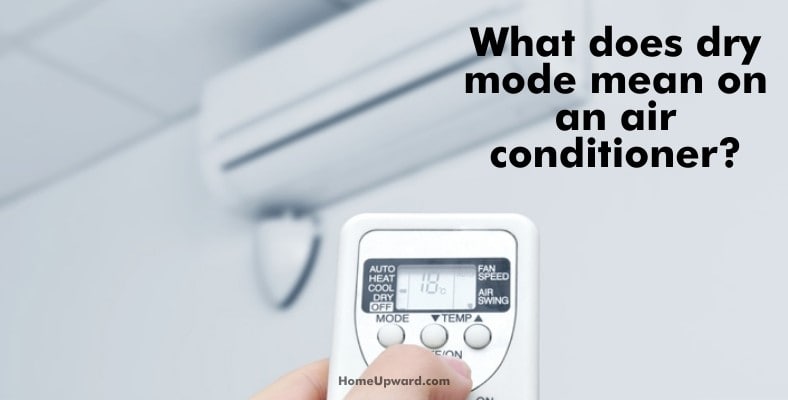Are air conditioners also equipped to deal with the problem of humidity? Or will you have to also invest in a dehumidifier?
Read on and I’ll explain it all.
Contents
Does Air Conditioning Dehumidify?
Put simply, yes: air conditioners do reduce the humidity in the air. There’s a reason it’s called “air conditioning” and not just “cooling.”
It works like this: as hot air enters your AC unit, it passes through what’s known as an evaporator, where it’s mixed with a special refrigerant to bring down its temperature. At the same time, the evaporator sifts out the moisture that comes in with the air, causing it to condense.
This condensation effect explains why you might have noticed water dripping from your air conditioner. It’s a normal part of the air conditioning process and is generally a sign that the unit is working the way it’s supposed to.
Producing cool air is only half of your AC’s job. The other half is lowering the relative humidity of your home.
How Much Humidity Does an Air Conditioner Remove?
The exact amount of moisture your air conditioner is capable of pulling from the air it circulates depends on a few factors. One of the most crucial of these factors is run time.
Many people believe that bigger is always better for air conditioners. But the humidity in your home has more to do with your air conditioner’s settings than its size.
A larger, more powerful AC unit will produce more cold air in less time, but if it’s too big for your living space, that can be a bad thing.
Overpowered air conditioners have much shorter cycles. Consequently, they don’t have time to thoroughly do away with accumulated humidity. You, therefore, become aware of a difference in the temperature of your surroundings but not the humidity.
To avoid this counterintuitive and potentially costly scenario, it’s essential to ensure your air conditioner is the appropriate size for your home. That way, you can ensure that it will run long enough to eliminate unwanted moisture from the air and make a perceptible difference in your overall comfort.
It’s also a good idea to set your unit so that the fan only kicks on while the evaporator is cooling. Not only will running the fan nonstop cause the motor to wear out much faster, but it will also blow the same humid air removed during the cooling cycle right back into your home.
With a properly configured AC system, it’s possible to keep the humidity in your home at or below about 60% at all times, regardless of what the weather is like outside. Homeowners and HVAC professionals commonly aim for a target range of 30-50%. Those percentages will, of course, be lower in areas where humidity isn’t as much of an issue.
Is a Dehumidifier an Air Conditioner?
As you now know, air conditioners can help to control humidity. Logically, it seems like the reverse might also be true—that dehumidifiers may provide cooler air temperatures.
Unfortunately, this isn’t the case.
Dehumidifiers reduce the absolute humidity in the air, plain and simple. In other words, the two methods of air treatment are not entirely interchangeable.
That said, there is some degree of overlap between their respective functions.
What Is Dehumidification?
As you’ve no doubt surmised, dehumidification is the process of removing excess humidity from the environment.
Commercial dehumidifiers accomplish this by rapidly changing the temperature of the air that flows through the unit. The dehumidifier pulls in air that’s already at an optimal temperature. It quickly cools it down to “wring out” the moisture it contains before warming it back up and returning it into the room.
This series of actions doesn’t have any real effect on the room’s temperature. However, since ambient moisture levels are closely linked to perceived temperature, decreasing the humidity can make a room feel cooler.
What Is the Difference Between a Dehumidifier and an Air Conditioner?
Dehumidifiers work very similarly to air conditioners. Both types of appliances rely on the same basic refrigeration principles and contain many of the same components. The critical difference lies in the way the air is cooled and condensed.
In a standard AC unit, air passes first through the evaporator coil, which cools it and draws out moisture, then through a separate condenser, where it’s recombined with refrigerant to keep the cooling cycle going.
In a dehumidifier, the evaporator and condenser are part of the same air path. This allows the unit to remove more moisture from the same amount of air. So much more that it fills a container that the user must empty at regular intervals.
In short, an air conditioner’s primary function is to cool warm air, and humidity control is just an advantageous side effect. On the other hand, a dehumidifier’s sole purpose is to take moisture out of the air, with no significant impact on its temperature.
What Does Dry Mode Mean on an Air Conditioner?
Many newer air conditioning systems include a “dry” mode among their list of features, but the function’s intended application is often a mystery to homeowners.
Dry mode is essentially an integrated dehumidifier. When selected, the AC’s fan and compressor run slower, encouraging more thorough moisture removal. No cooling occurs while the unit is in dry mode—it simply acts as a dehumidifier until you switch it over to another cycle.
If it isn’t too hot outside, setting your air conditioner to dry mode can be a great way to make yourself more comfortable while also shaving a few bucks off your monthly utility bill.
You can also follow up a normal cooling cycle with half an hour or so of dry mode to eliminate any lingering humidity the AC failed to filter out.




